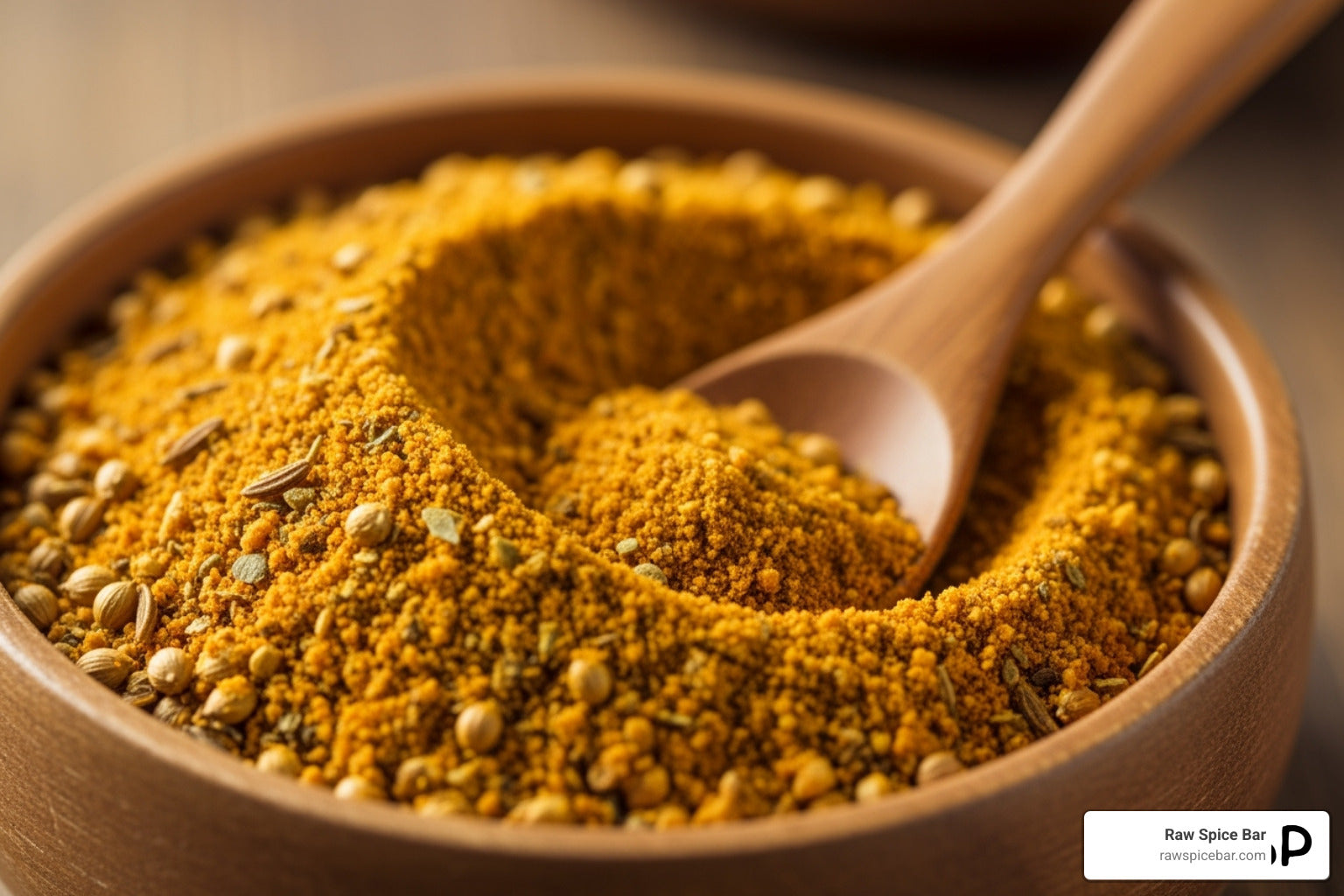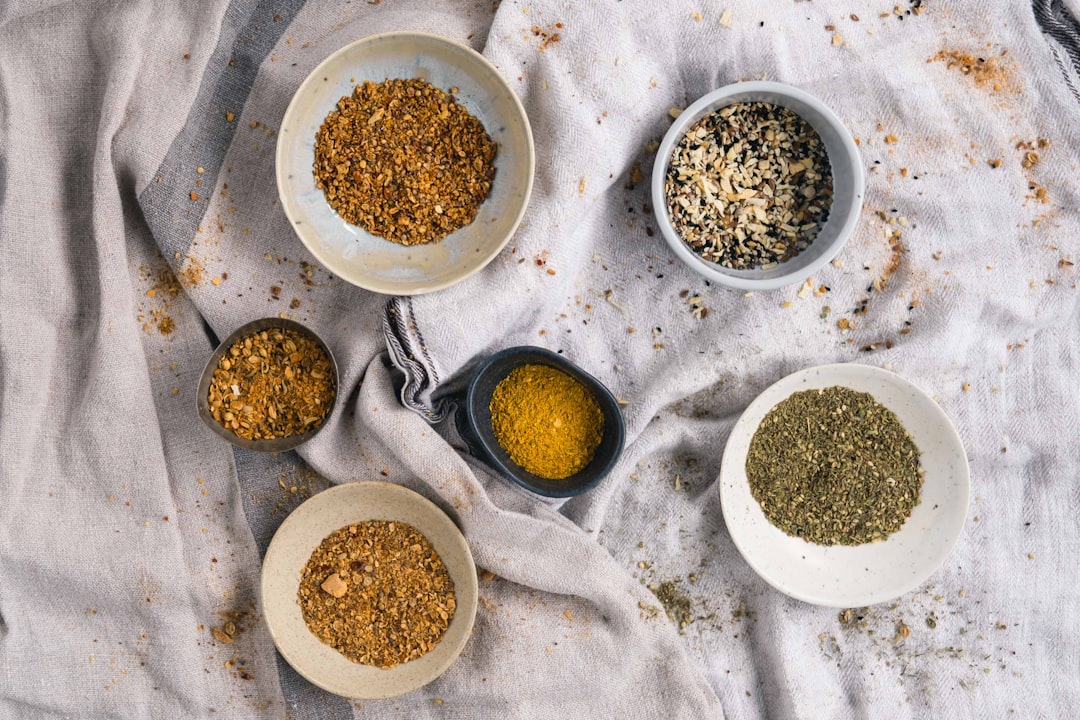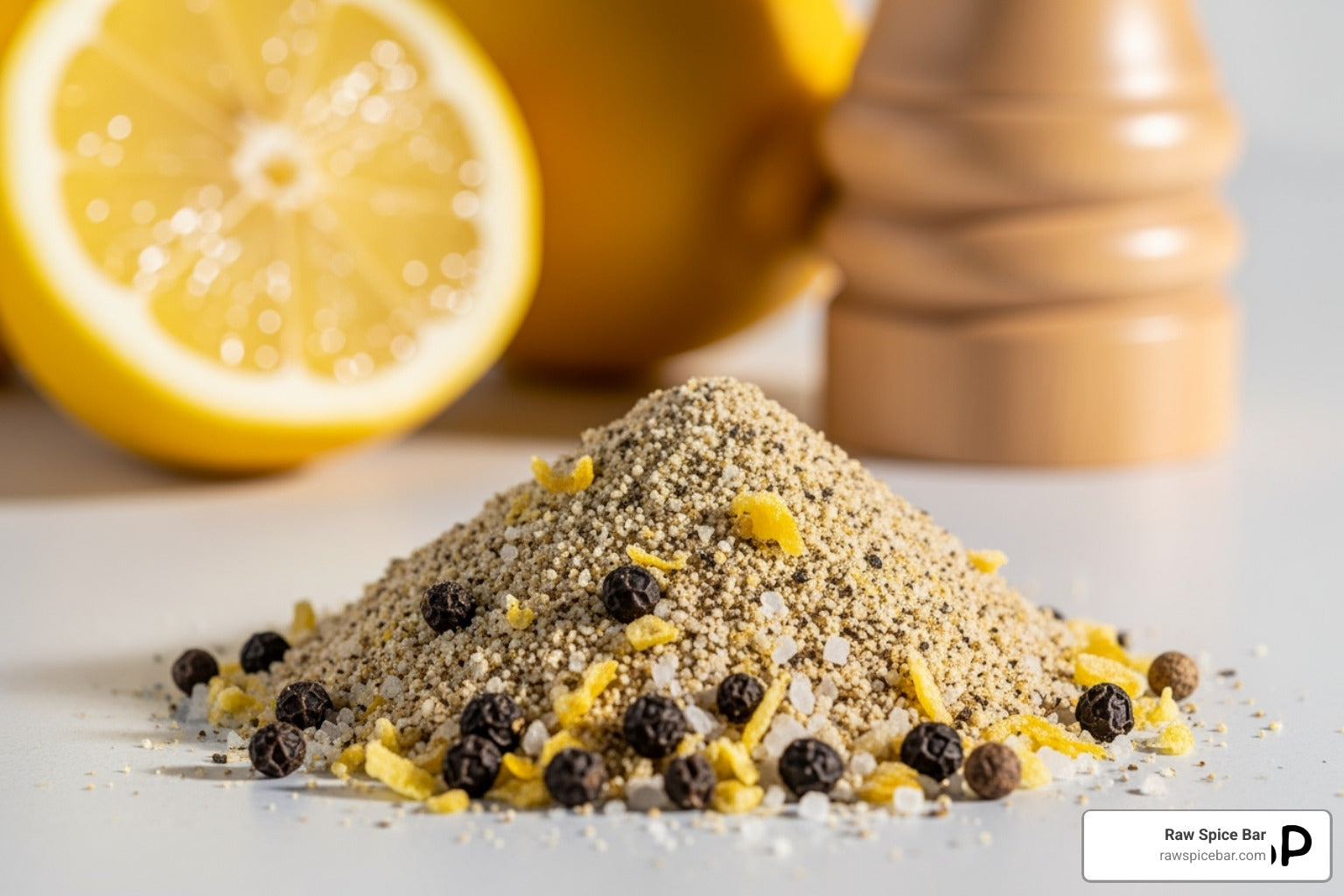Have you ever found yourself halfway through cooking, only to realize you're out of smoked paprika?
Don't stress—there are plenty of fantastic alternatives that can bring that smoky, savory flavor right back into your dish! You’d be surprised how easy it is to swap ingredients with a little creativity.
Raw Spice Bar offers a wide range of spice blends that can inspire you to get creative and experiment with flavors, whether you’re looking for a smoky hit or something unique to spice up your dish.
Some of the best substitutes include chili powder or ancho chili powder, which bring earthy heat and depth. If you’re craving a bit of smokiness, try combining regular paprika with cumin or smoked salt. Who knew that a simple tweak could take your meal to new heights?
And if you're eager to experiment further, a global spice subscription could open up new flavor doors and give you access to fresh, authentic spice blends right at your doorstep.
In this blog, we will cover:
-
Best alternatives for smoked paprika and how they compare to the original.
-
Creative ways to mix your own blends to achieve that smoky flavor.
-
Tips on adjusting spice levels to get the taste just right.
Ready to explore more than just smoked paprika?
Let's dive into some of the best alternatives.
Understanding Smoked Paprika
Smoked paprika is a versatile spice that adds depth and richness to a variety of dishes. Known for its unique flavor, it is a staple in the kitchen for any serious cook. You'll learn about its origins and qualities, and how to use it in your cooking.
Origins and Characteristics
Smoked paprika originates from Spain, where it's made by drying peppers over oak wood fires. This process infuses a smoky flavor into the peppers, setting it apart from regular paprika.
The peppers are then ground into a fine powder, resulting in a spice that is deep in color and rich in aroma. Different types of smoked paprika include sweet, bittersweet, and hot. Each type varies in spiciness and depth, allowing flexibility in recipes.
The unique blend of smokiness and spice makes smoked paprika a sought-after ingredient globally.
Culinary Uses
Smoked paprika is perfect for adding flavor without overwhelming a dish.
-
It works well in soups, stews, and roasts, bringing a smoky undertone that's hard to replicate with other spices.
-
Sprinkle it over roasted vegetables or mix it into marinades for meats to enhance the taste.
-
Try incorporating smoked paprika into homemade spice rubs for those who enjoy experimenting.
-
It pairs beautifully with garlic, cumin, and oregano, offering various culinary possibilities.
Common Substitutes for Smoked Paprika
Smoked paprika adds a rich, smoky flavor to dishes, making it a favorite spice in many kitchens. However, several substitutes can mimic its taste if you find yourself without it. Each alternative offers unique characteristics that can enhance your cooking in different ways.
Sweet Paprika
Sweet paprika is a milder option that lacks the smoky element of smoked paprika but can still bring vibrant color and flavor to a dish. It's perfect if you enjoy the peppery notes without the heat.
Sweet paprika is made from ground mild peppers and maintains a rich color. Consider blending it with a hint of liquid smoke or smoked sea salt to add some smoke. This allows you to achieve a closer match in flavor, even though sweet paprika itself isn't smoked.
Adjust the amounts to your taste preferences.
Chili Powder
Chili powder brings heat and depth to a recipe.
It's a blend of spices, typically including ground chili peppers, cumin, garlic, and oregano. This makes it a versatile substitute for smoked paprika, especially if you're making a spicy dish.
While it won't have the smoky taste, the added spices can enrich your dish. Use chili powder cautiously, as it can be spicier than smoked paprika.
A small amount can go a long way.
Chipotle Powder
Chipotle powder is a close match due to its smoky and spicy flavor.
Made from dried, smoked jalapeño peppers, it shares the earthy undertones with smoked paprika. This makes it an ideal substitute if you enjoy both heat and smoke.
When using chipotle powder, start with lesser amounts, as it tends to be hotter. Gradually adjust to suit your desired spice level.
Our spice subscription service delivers a variety of global flavors to your kitchen. You can add fresh, vibrant tastes that elevate everyday meals using our blends.
Creative Alternatives
When you don't have smoked paprika, there are several great substitutes that can bring a similar flavor to your dishes. You can try blending spices or using other spices, like ancho chili powder, which adds both heat and depth. Combining ingredients like smoked sea salt with sweet paprika can also help mimic that distinct smoky taste.
Cumin and Oregano Mix
Mixing cumin with oregano offers a robust flavor when you're out of smoked paprika.
Cumin adds earthiness, while oregano gives a hint of herbal brightness. This combination is ideal for Mexican or Southwestern dishes. Use equal amounts of cumin and oregano to match the intensity of smoked paprika. Adjust the mix to your taste preference.
Adding a dash of chili powder can boost its resemblance to smoked paprika. This blend works well in stews, marinades, and grilled meats. You can customize it further to suit different recipes by adding garlic or onion powder.
Ancho Chili Powder
Ancho chili powder is made from dried poblano peppers and offers a rich, smoky flavor with medium heat. It has a milder heat than cayenne but captures the smokiness you’re seeking.
Add a bit of sweetness by mixing in some brown sugar or honey if desired. This balance can more closely mimic the nuances of smoked paprika. The depth of flavor in ancho powder can make your dishes taste more complex and interesting without overwhelming other flavors.
Smoked Sea Salt and Sweet Paprika
Combine smoked sea salt with sweet paprika as an excellent way to create the smoky essence you miss from smoked paprika.
The smoked salt introduces that signature smoky quality, while sweet paprika provides color and a mild, peppery flavor. This mix is versatile for various dishes, from grilled vegetables to meats.
Use this blend as a dry rub or seasoning sprinkle to bring out flavors in your dishes. This alternative is beneficial for those who prefer a milder spice level.
Homemade Blends
Creating your own smoked paprika blend at home can be a rewarding way to enhance your cooking. Explore DIY methods to get the right smoky flavor and learn techniques for toasting and smoking spices.
DIY Smoked Paprika
Making your own smoked paprika can be a fun way to control the flavor in your dishes.
Start with dried red peppers, which can range from mild to hot, depending on your taste. Grind them into powder using a spice grinder or a mortar and pestle. Once ground, mix in other spices like garlic or onion powder for added depth.
Using this approach lets you adjust the intensity of flavors as you like. Keep the freshly made blend in an airtight container to maintain its freshness.
We create exceptional spice blends that make dishes lively and flavorful, like making your own smoked paprika at home.
Toasting and Smoking Techniques
Toasting spices is a great way to unlock their full potential.
Begin by heating a skillet over medium heat. Add your spices and stir them frequently until they release a fragrant aroma. Be careful not to burn them. This process enhances their flavor before grinding.
For a smoked flavor, try smoking the spices on a grill. Use indirect heat and add some soaked wood chips to the grill. The smoke will infuse the spices, giving them that classic smoked paprika taste.
You can create a flavorful, homemade smoked paprika substitute by mastering these techniques.
Impact on Flavor and Aroma
When you replace smoked paprika in a recipe, the flavor and aroma can change significantly. Smoked paprika is known for its deep, smoky taste and vibrant red color. It's not just about the heat or sweetness; the smokiness makes it stand out in dishes.
Flavor Alternatives
-
Chipotle Powder: Offers a similar smoky flavor with a bit more heat.
-
Ancho Chili Powder: Adds a smoky, sweet, and mild spice to your dish.
-
Liquid Smoke: A few drops can mimic the smoke without adding heat.
Aroma Considerations
-
Smoked Paprika adds depth and complexity to the smell of your food.
-
Using non-smoked spices might result in a less robust aroma.
-
Adding a combination of spices can sometimes recreate the aromatic profile.
Experimentation
Trying new spice blends can open doors to unique culinary experiences. With recipe cards included, you can explore flavors from around the world in your kitchen. Our commitment is to enhance your cooking with the freshest ingredients, helping you create dishes far from ordinary.
Embrace the change and enjoy discovering new favorites!
Adjusting Recipes for Taste and Heat
Adjusting flavors is key to maintaining the perfect balance in your dishes when swapping out smoked paprika. Smoked paprika adds a unique, smoky, warm, and slightly sweet flavor.
Flavor Substitutes:
-
Chipotle Powder: This offers a rich, smoky taste but may add more heat.
-
Cayenne Pepper: Use sparingly if you want increased heat without the smoke.
-
Ancho Chili Powder: Brings a mild smokiness with a tinge of sweetness.
Heat Substitutes:
-
Hot Sauce: Try adding a few drops to kick up the spice level.
-
Crushed Red Pepper: For extra heat, sprinkle as needed.
Consider mixing these substitutes to achieve the desired taste. Start by adding small amounts and tasting as you go. This allows you to customize the dish to your liking.
Pro Tip:
Remember, some spices like cayenne are much hotter than smoked paprika, so adjust the quantity carefully.
We offer spice blends that bring the world's flavors to your kitchen. With our global spice subscription, you can explore new culinary experiences every month.
Using our blends, you can effortlessly adjust your recipes to keep the flavors exciting and fresh. This way, you never have to settle for bland meals again.
Considerations for Dietary Restrictions
When choosing substitutes for smoked paprika, consider any dietary restrictions.
-
Knowing what ingredients are in your spice blends is important, especially if you have allergies or follow a specific diet.
-
If you are allergic to peppers, be cautious with chili powder or cayenne as substitutes. These spices may contain similar ingredients to smoked paprika and can trigger allergic reactions.
-
Ensure that any spice blend or substitute you use is certified gluten-free for those following a gluten-free diet. Cross-contamination can happen in facilities that process multiple types of spices.
-
People limiting sodium intake should look for salt-free spice blends. Many spice mixes and substitutes for smoked paprika might contain added salt, so check labels carefully.
-
Vegetarians and vegans should know the base ingredients in spice blends. Some mixes may contain traces of animal products, although this is rare in spices.
Storing and Shelf Life of Substitutes
When you stock up on spice substitutes, it's important to know how to store them and understand their shelf life. Proper storage keeps their flavor fresh and helps you get the most out of them. Let's look at some tips and tricks.
Storage Tips:
-
Keep spices in a cool, dark place. Direct sunlight can cause them to lose flavor.
-
Store them in airtight containers. This helps prevent moisture from getting in and keeps them fresh.
-
Avoid storing near the stove, as heat can make them lose potency faster.
Shelf Life:
Spices don't spoil, but they lose flavor over time. Here's a quick guide:
|
Spice Substitute |
Shelf Life |
|
Smoked Paprika |
1-2 years |
|
Chili Powder |
1-2 years |
|
Ancho Chili Powder |
1-1.5 years |
Replace these spices once they lose their aroma or taste dull.
Refresh Your Pantry:
Don't settle for bland. Invest in quality spices to enhance your meals. With subscriptions, your cooking will never be boring. Sign up today and experience exciting, healthy flavors that elevate your dishes.
Frequently Asked Questions
When you're out of smoked paprika, the world of substitutes can feel overwhelming. But don’t worry, we’ve got you covered! Here are some of the most common questions you might have when trying to replace smoked paprika in your dishes:
What are suitable alternatives to smoked paprika when cooking chicken?
Smoked paprika gives chicken a wonderful smoky flavor. If you're out, try using smoked chipotle powder. Another choice is ancho chili powder, which offers a rich, smoky depth similar to smoked paprika.
Can regular paprika be used in place of smoked paprika, and if so, how?
If you only have smoked paprika, regular paprika can replace it. Although it lacks the smokiness, you can add a pinch of cumin or a dash of liquid smoke to mimic the flavor profile. This combination works well in recipes where a smoky taste is not overly prominent.
Are there any non-spicy options to substitute for smoked paprika in recipes?
For non-spicy options, consider using sweet paprika with a touch of cumin for smokiness. Cumin provides an earthy aroma without adding heat, making it great for dishes where you want to avoid extra spice and keep flavors mild.
What spices could mimic the flavor profile of smoked paprika?
To capture the smoky essence of smoked paprika, use a blend of cumin, smoked salt, and chili powder. This mix can replicate the underlying flavors without overpowering other ingredients. It works well in stews and roasted vegetables.
Is smoked paprika an essential ingredient, or can it be omitted from recipes?
What could be used as a smoked paprika substitute in vegetarian dishes?
Vegetarian dishes often rely on smoked paprika for depth. In its absence, consider using smoked salt paired with mild chili powder. This combination adds smokiness and a hint of spice without overpowering flavors.




